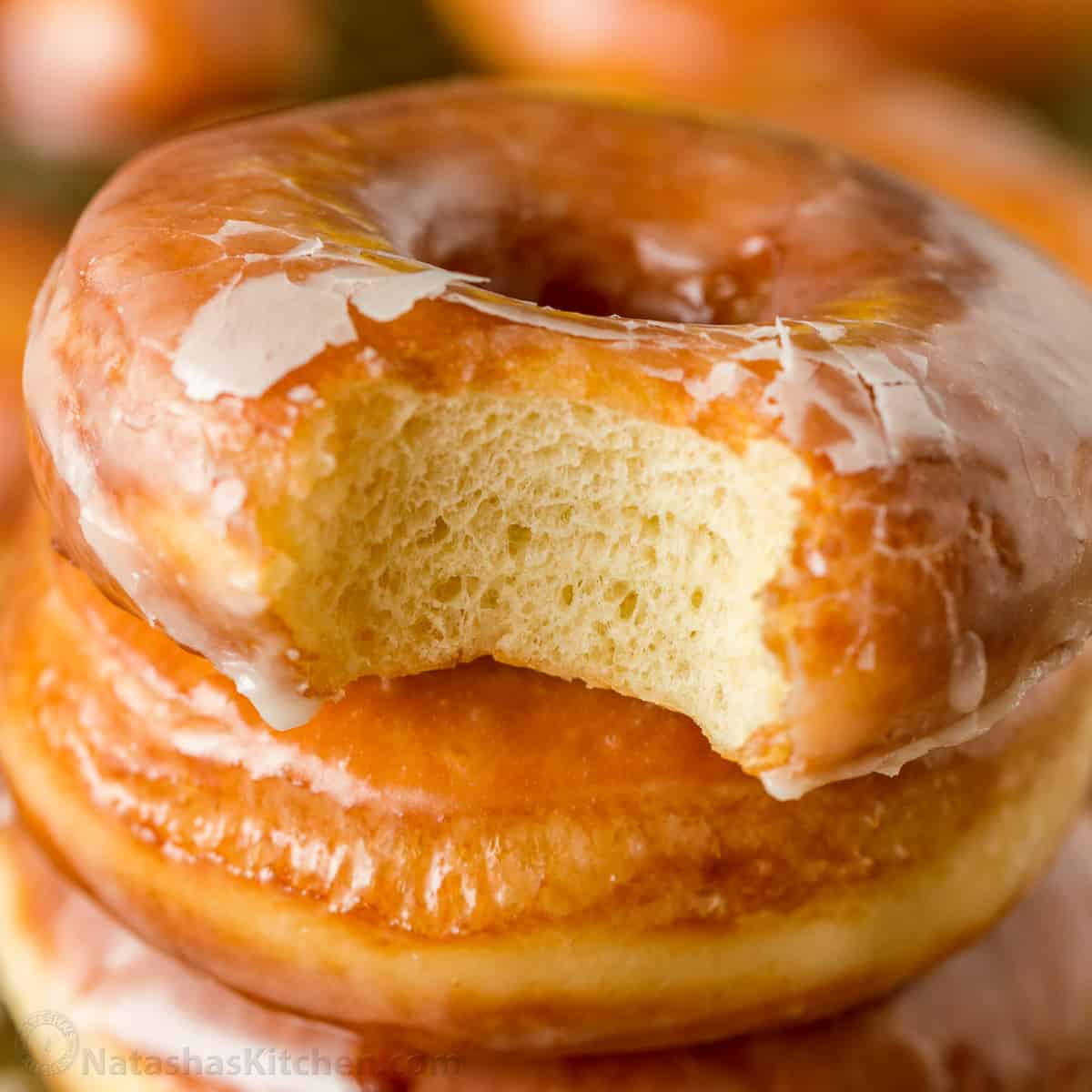This tested and trusted classic donut recipe is the way forward to achieving soft, pillowy donuts. Take it a notch higher by coating it with frosting or cinnamon sugar.
Today’s classic donut recipe holds a special place in my heart. I can have hot, sweet donuts for breakfast, lunch, and dinner.

It is also a favorite in my household. This means whenever I am making these, I literally have an army waiting with their plates.
As loved as donuts are, they can seem intimidating to many people.
What you taste when you purchase them at those popular donut stores is most times, not the original taste of traditional donuts.
Homemade donuts taste so much better and less artificial.
Whys of Donut-making
I will share my simple go-to recipe for making donuts. Before that, let’s address the 5 Whys of donut-making fails.
1. Why are My Donuts Hard?
The ideal texture of a donut is to be soft and pillowy. When bitten into, you want each bite to bask in its succulency, I get it. But sometimes, you end up with hard and dense donuts. This is most likely as a result of a failed proofing process, over-proofing or over-mixing the dough.
When the yeast activates and the dough begins to rise, the goal is to let it rise till it has doubled in size.
It is best to also refrain from over-kneading or over-proofing the dough. Knead for just about 10-12 minutes and let it rest for 1 or 2 hours. The no-knead donut recipes are proof that kneading is not as important as the gluten that develops when the dough is allowed to rest.
2. Why is My Donut Dough Not Rising?
The main raising agent in a donut recipe is active dry yeast, emphasis on active. The dough must be alive and active to enable the dough to proof.
If unsure of the state of your yeast, try putting a tablespoon of it into a cup of lukewarm water and give it a few minutes to bloom (appear foamy or cuddly on the surface). If it does not bloom, then you can be sure it is dead.
There are 2 proofing phases when making donuts. Proofing can fail if the yeast is also not enough. As a rule of thumb, use 1/2 teaspoon of active dry yeast per cup of flour.
Another reason is not letting the dough proof in a warm environment. My hack for this is heating up my oven to about 200F and turning it off before placing the dough in it. This lets it be proof within an hour.
3. Why are My Donuts Soggy?
You can end up with soggy donuts after storing them. After the donuts are fried, let them cool completely before storing them in a roomy air-tight container.
Storing them when they are still warm in like a ziploc bag can increase the risk of sogginess.
4. Why are My Donuts Raw on the Inside?
The temperature of the oil can make or mar the donuts. If the oil is not hot enough, you can end up with dense donuts. On the other hand, if the oil is too hot, these can cause the donuts to brown too quickly without cooking through properly.
Your best bet is to use a cooking thermometer to ensure temperature is right and remains consistent. You want to maintain a temperature level of 360F-370F when frying donuts.
5. Why are My Donuts Greasy?
The temperature of the oil is so important when frying donuts. It can be a challenge achieving the right temperature level (between 360F-370F) and being consistent with it all through the frying time.
Greasiness can happen when the donut soaks up too much oil. This is because the oil was not hot enough or dropped in temperature. As earlier advised, use a thermometer to ensure the oil is hot enough before frying.
Now that we have looked at the most common Whys of donut-making fails, let’s dive into the recipe that has produced the best donuts for me so far.
It is a detailed recipe and one you can tweak according to your preference.
I coated mine with some cinnamon sugar, you can frost them or simply have them plain.
How to Make Classic Donuts
Follow our tested and trusted recipe to achieve soft, pillowy donuts. Take it up a notch by dusting them off with some confectioners or cinnamon sugar.
Baking Instructions
In a large bowl, combine the warm milk, a tbsp of sugar, and the yeast, and let it sit for 10 mins or until it blooms (appearing foamy on the surface).
Add in all other ingredients into the milk mix, use a stand mixer with a dough hook, and begin mixing on low speed for 5 minutes. Increase to high speed and continue mixing for 3 minutes.
Transfer to an oiled surface and knead by hand for 1 minute. Form a ball and place in the bowl, cover and leave to sit in a warm place until it has doubled in size, this should take anywhere between 1-2 hours.
Transfer the dough to the oiled surface, and use a rolling pin to roll out the dough to an inch thickness. Use a donut cutter to cut out the donuts, mold them into a perfect ball, and place them on a lined sheet.
When the dough balls are all laid out, cover and let it proof a second time for 30 minutes while you heat up your oil for frying to a temperature of 360℉-370℉.
Begin frying the donuts in batches, it is important you don’t overcrowd the pan. Flip over when the donut has browned slightly.
When the donuts have browned nicely on both sides, pack them out and lay them on a rack to drain.
Mix the cinnamon and sugar. Toss in the donuts until they are fully coated with the cinnamon sugar.


Leave a Reply